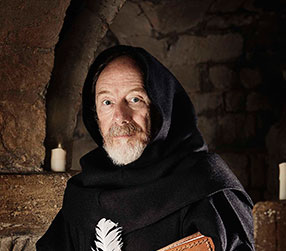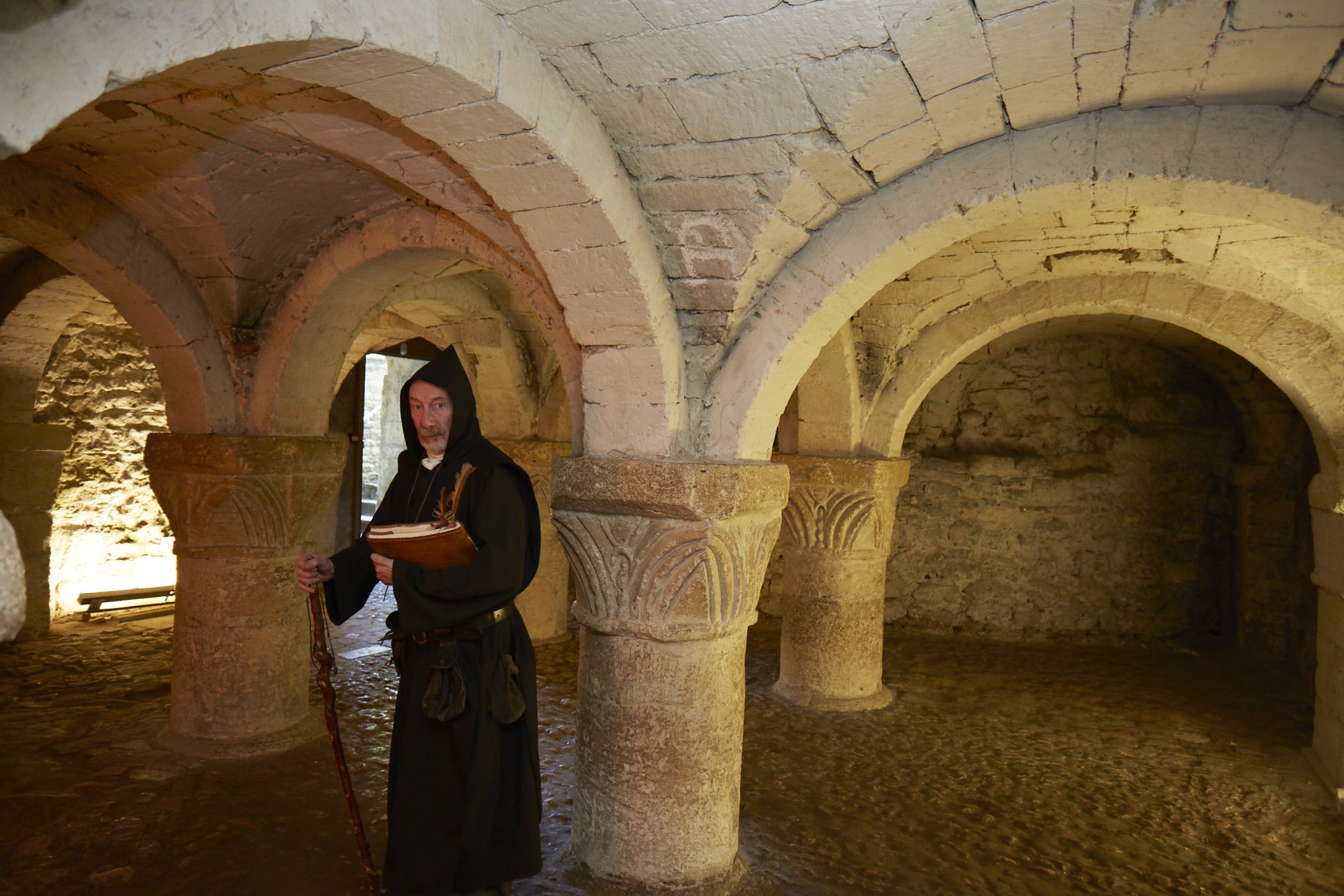 bbb
bbb
King Arthur: Legend of the Sword receives its UK premiere in London’s Leicester Square this evening. But where did the legends of King Arthur really begin? Geoffrey of Monmouth is known to be the first to write down the legends of King Arthur and he did so right here at Oxford Castle!

King Arthur: Legend of the Sword receives its UK premiere in London’s Leicester Square this evening. But where did the legends of King Arthur really begin? Geoffrey of Monmouth is known to be the first to write down the legends of King Arthur and he did so right here at Oxford Castle!
Geoffrey is thought to have been born around the turn of the 12th century in Wales. In 1129, Geoffrey moved to Oxford where he was most probably a secular canon at the college of St. George in Oxford Castle. Evidence for this can be found in the fact that Geoffrey is listed as a witness on many charters of Robert D’Oilly – founder of the collegiate church of St. George – alongside Walter, the Archdeacon of Oxford.
In its heyday, St. George’s was a flourishing establishment and an early centre for teaching in Oxford, supporting a small community of clergy and perhaps a handful of students, pre-dating the developing Oxford University by a century or so. Alongside his work in the church, Geoffrey compiled a number of books during the years he is thought to have been serving in Oxford Castle. One of these books tells the story of a character now known around the world…
Historia Regum Britanniae, better known as The History of the Kings of Britain contains the first known written reference to the Legends of King Arthur, outlining stories including Arthur, Guinevereand Lancelot, among many others. Written in 1136, it was regarded as an account of history until well into the 16th century when the Tudors challenged it. Geoffrey had always claimed that the book was translated from an “ancient book in the British language that told in orderly fashion the deeds of all the kings of Britain”, given to him by Walter, Archdeacon of Oxford. It is possible that some of Geoffrey’s inspiration for the book did come from Walter but overall, the book is now considered by most to be a work of fiction. Other works by Geoffrey of Monmouth include the Prophetiae Merlini and the poem Vita Merlini; both include details of the life of Merlin, another highly recognisable character.
Helen Fulton, Professor of Medieval Literature at the University of York and an expert in Arthurian literature, has previously commented: “Geoffrey of Monmouth was a serving canon in St George’s Chapel on the site of what is now Oxford Castle Unlocked, and he would have been based there when he wrote his famous Latin chronicle, Historia Regum Britanniae, ‘The History of the Kings of Britain’, around 1136. It was Geoffrey who introduced the figures of King Arthur and Merlin to a wide medieval readership and paved the way for the enormous popularity of the Arthurian legends in later centuries, right up to modern times.”
The only remnants of the chapel now lie in the ancient chapel’s crypt, available to visitors to the site through a 50 minute guided tour at Oxford Castle Unlocked, taking in the Saxon stone-built St. George’s Tower before descending to the atmospheric crypt, where Geoffrey of Monmouth would have walked the footprint of the crypt whilst penning his notable tome.
If you would like to learn more, book your visit to Oxford Castle & Prison where a costumed guide will take you on a tour. Step inside and do 1,000 years of time. Book now: https://bookings.oxfordcastleandprison.co.uk/book


| Cookie | Duration | Description |
|---|---|---|
| cookielawinfo-checkbox-advertisement | 1 year | Set by the GDPR Cookie Consent plugin, this cookie is used to record the user consent for the cookies in the "Advertisement" category . |
| cookielawinfo-checkbox-analytics | 11 months | This cookie is set by GDPR Cookie Consent plugin. The cookie is used to store the user consent for the cookies in the category "Analytics". |
| cookielawinfo-checkbox-functional | 11 months | The cookie is set by GDPR cookie consent to record the user consent for the cookies in the category "Functional". |
| cookielawinfo-checkbox-necessary | 11 months | This cookie is set by GDPR Cookie Consent plugin. The cookies is used to store the user consent for the cookies in the category "Necessary". |
| cookielawinfo-checkbox-others | 11 months | This cookie is set by GDPR Cookie Consent plugin. The cookie is used to store the user consent for the cookies in the category "Other. |
| cookielawinfo-checkbox-performance | 11 months | This cookie is set by GDPR Cookie Consent plugin. The cookie is used to store the user consent for the cookies in the category "Performance". |
| PHPSESSID | session | This cookie is native to PHP applications. The cookie is used to store and identify a users' unique session ID for the purpose of managing user session on the website. The cookie is a session cookies and is deleted when all the browser windows are closed. |
| viewed_cookie_policy | 11 months | The cookie is set by the GDPR Cookie Consent plugin and is used to store whether or not user has consented to the use of cookies. It does not store any personal data. |
| Cookie | Duration | Description |
|---|---|---|
| _ga | 2 years | The _ga cookie, installed by Google Analytics, calculates visitor, session and campaign data and also keeps track of site usage for the site's analytics report. The cookie stores information anonymously and assigns a randomly generated number to recognize unique visitors. |
| _gat_UA-9822230-4 | 1 minute | A variation of the _gat cookie set by Google Analytics and Google Tag Manager to allow website owners to track visitor behaviour and measure site performance. The pattern element in the name contains the unique identity number of the account or website it relates to. |
| _gcl_au | 3 months | Provided by Google Tag Manager to experiment advertisement efficiency of websites using their services. |
| _gid | 1 day | Installed by Google Analytics, _gid cookie stores information on how visitors use a website, while also creating an analytics report of the website's performance. Some of the data that are collected include the number of visitors, their source, and the pages they visit anonymously. |
| CONSENT | 2 years | YouTube sets this cookie via embedded youtube-videos and registers anonymous statistical data. |
| Cookie | Duration | Description |
|---|---|---|
| _fbp | 3 months | This cookie is set by Facebook to display advertisements when either on Facebook or on a digital platform powered by Facebook advertising, after visiting the website. |
| fr | 3 months | Facebook sets this cookie to show relevant advertisements to users by tracking user behaviour across the web, on sites that have Facebook pixel or Facebook social plugin. |
| test_cookie | 15 minutes | The test_cookie is set by doubleclick.net and is used to determine if the user's browser supports cookies. |
| VISITOR_INFO1_LIVE | 5 months 27 days | A cookie set by YouTube to measure bandwidth that determines whether the user gets the new or old player interface. |
| YSC | session | YSC cookie is set by Youtube and is used to track the views of embedded videos on Youtube pages. |
| yt-remote-connected-devices | never | YouTube sets this cookie to store the video preferences of the user using embedded YouTube video. |
| yt-remote-device-id | never | YouTube sets this cookie to store the video preferences of the user using embedded YouTube video. |